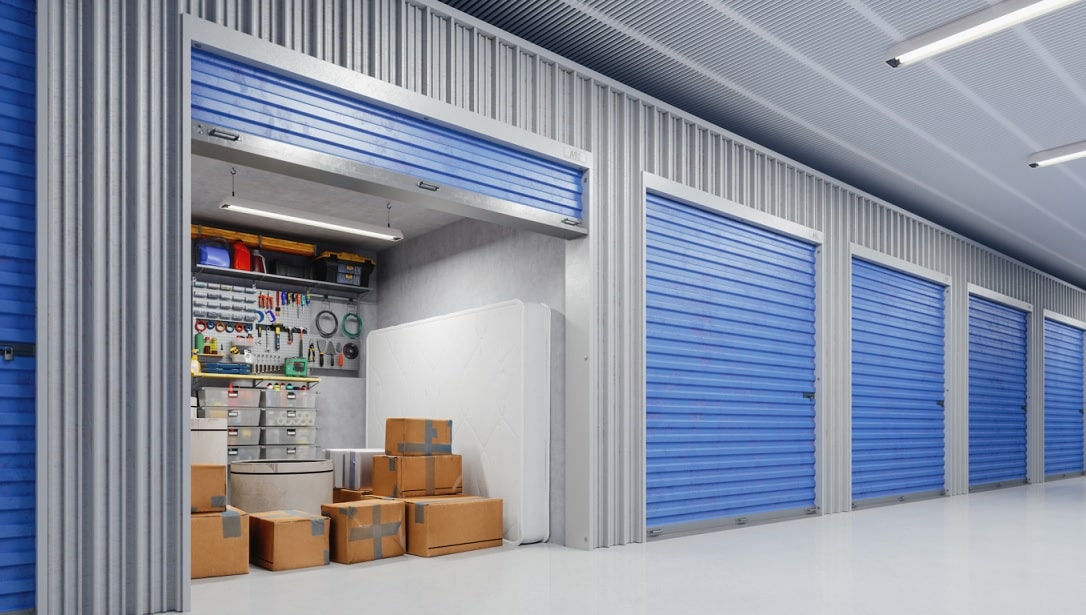Moving is one of life’s most stressful transitions, but careful preparation can make it manageable. According to the U.S. Census Bureau, the average American will move 11.7 times in their lifetime. This guide provides a comprehensive plan for preparing your move, including checklists, packing strategies, budgeting, and settling in.
Do I Need to Create a Moving Checklist?
A moving checklist is more than a simple to-do list. It’s your roadmap for a successful transition. A checklist allows you to break up your move into smaller, more manageable tasks, which, according to the American Psychological Association, can help reduce stress levels. Need more of a reason? According to the Consumer Financial Protection Bureau (CFPB), checklists can also help prevent missing deadlines so you can avoid costly mistakes.
| Week | % of Tasks Completed | Tasks | Responsible Person(s) |
|---|---|---|---|
| 8 Weeks Before | 5% | • Research new housing and neighborhood amenities • Start decluttering rooms • Create a moving binder or digital organizer |
Self / Family Members |
| 7 Weeks Before | 10% | • Inventory belongings • Decide on items to sell, donate, or discard • Research moving companies and request quotes |
Self / Partner / Roommates |
| 6 Weeks Before | 15% | • Gather packing supplies (boxes, tape, bubble wrap) • Begin packing non-essential items • Book professional movers or a rental truck |
Self / Family Members |
| 5 Weeks Before | 25% | • Continue decluttering and packing • Notify landlord (if renting) or begin selling old property items • Plan logistics for pets or children |
Self / Family Members |
| 4 Weeks Before | 40% | • Notify utilities and schedule shut-offs at old home • Set up utilities at new home • Confirm moving company booking and insurance |
Self / Partner |
| 3 Weeks Before | 55% | • Pack the majority of items except daily essentials • Organize important documents for transfer • Prepare change of address notifications |
Self / Family Members |
| 2 Weeks Before | 70% | • Pack valuables and fragile items carefully • Arrange temporary storage if needed • Confirm travel plans and accommodations for long-distance moves |
Self / Family Members |
| 1 Week Before | 90% | • Deep clean old home • Gather essentials bag (clothes, toiletries, chargers, documents) • Label all boxes clearly with room and contents |
Self / Partner / Kids (if applicable) |
| Moving Day | 100% | • Supervise loading of items • Conduct final walkthrough of old home • Ensure your valuables and essentials bag are with you • Lock doors, turn off lights, and leave keys as required |
Self / Movers / Family Members |
When creating your checklist, you should structure it by week and include the tasks you need to complete. For example:
- 8 weeks before moving – research housing, neighborhood amenities, start decluttering
- 6 weeks before moving – gather packing supplies and start packing non-essentials, research professional moving companies
- 4 weeks before moving – notify utilities and file a change of address with the USPS, hire a moving company
- 2 weeks before moving – pack the majority of your items, confirm logistics, and plan pet/child care
- 1 week before moving – deep clean, gather all your important documents, finalize essentials
- Moving day – walk through your old house, supervise loading, and make sure to have your essentials bag handy
Keep your checklist visible to track progress and deadlines. If you are moving with roommates or family members, assign each person responsibilities. Update the checklist daily to maintain momentum.
How Do I Budget for My Move?
According to the Census Bureau, around 31 million Americans move annually. Moving costs vary, but you should expect to put aside at least $1,000 for a local move and around $4,000 for a long-distance move. Of course, the costs depend on distance, how much you’re moving, and any additional services you want to include. When budgeting for your move, make sure to include the following in your costs:
- Major expenses – hiring professional movers or renting a truck, packing supplies, deposits, fuel, and lodging if you are making a long-distance move
- Additional services – packing and unpacking, storage, and plastic bin rentals
- Hidden moving fees – stairs, long-carry, material charges, travel fees, tolls, parking, moving crew tips
- Additional moving costs – meals, childcare, pet care, cleaning, and utility setup fees
| # | Expense Category | % of Total Budget | Estimated Cost (Local Move $1,000) | Estimated Cost (Long-Distance Move $4,000) | Notes / Tips |
|---|---|---|---|---|---|
| 1 | Professional Movers / Truck Rental | 50% | $500 | $2,000 | Hiring movers saves time and reduces physical strain; DIY moves are cheaper but require labor. |
| 2 | Packing Supplies | 10% | $100 | $400 | Boxes, tape, bubble wrap, markers, and protective materials. |
| 3 | Travel / Fuel / Lodging | 15% | $150 | $600 | Include gas, tolls, and overnight stays for long-distance moves. |
| 4 | Deposits / Utilities Setup | 10% | $100 | $400 | Utility activation, security deposits, rental deposits. |
| 5 | Additional Services | 5% | $50 | $200 | Packing/unpacking, storage, plastic bin rentals. |
| 6 | Hidden Fees | 5% | $50 | $200 | Fees for stairs, long carry, materials, parking, or crew tips. |
| 7 | Miscellaneous | 5% | $50 | $200 | Meals, childcare, pet care, cleaning, unexpected expenses. |
| Total | 100% | $1,000 | $4,000 | Include an extra 10% emergency fund | |
Set aside an extra 10% of your total budget as an emergency fund. Track spending with a spreadsheet or budgeting app like You Need a Budget to stay on track. Budgeting early prevents surprises and helps identify areas to reduce costs.
Why Should I Declutter Before Moving?
Decluttering makes packing and unpacking faster and has other benefits:
- Saving money: fewer items reduce moving costs, and you can earn money by selling excess belongings
- Less stress: the Mayo Clinic links clutter to higher stress and anxiety
- Supporting sustainability: donate usable items to charities and recycle responsibly
Steps to declutter efficiently:
- Go through each room and sort items into keep, donate/sell, or recycle/throw out
- Apply the one-year rule: discard items you haven’t used in over a year
- For small items, make a quick decision (within three seconds) on which pile they belong to
Decluttering helps reduce costs, speeds up packing/unpacking, and makes your move less overwhelming.
What Are Some Packing Best Practices?
Packing is the most time-consuming task in moving, but being strategic protects your belongings and simplifies unpacking.
Packing tips:
- Create an inventory of all items: note quantity and pre-existing damage, take photos of fragile items, and indicate the destination room
- Photograph electronics setups: keep cords and parts together in a box
- Label every box with contents and the destination room
- Pack an essentials box with toiletries, medications, chargers, important documents, and a few days’ clothing
- Protect fragile items with bubble wrap, towels, packing paper, or packing peanuts, leaving air gaps for cushioning
- Avoid overloading boxes: keep under 50 pounds
- Use color-coding for rooms to make unpacking faster
Proper packing reduces loss or damage during transit.
Which Documents Should I Transfer or Update?
Administrative tasks are crucial for a smooth relocation, and that means handling things like your utilities, medical records, school records, and so on beforehand. You don’t want any complications after your move, after all. Some common things to update include:
- Utilities: schedule shut-off at old home and activation at new home (electric, gas, water, internet)
- Mail forwarding: file a change of address with USPS
- Government records: update driver’s license, voter registration, and vehicle registration
- Financial institutions: notify banks, lenders, and insurance providers
- School records: obtain transcripts, vaccination records, and enrollment documents
- Medical information: Request copies from providers for continuity of care
| # | Document Type | Specific Documents | Deadline | Responsible Person | Completed? |
|---|---|---|---|---|---|
| 1 | Identification | Driver’s license, passport, Social Security card | 2 weeks before | Self | ☐ |
| 2 | Financial | Bank notifications, credit/debit card updates, insurance policies | 2–4 weeks before | Self / Partner | ☐ |
| 3 | Utilities & Services | Electricity, gas, water, internet, cable setup/shutdown confirmations | 4 weeks before | Self | ☐ |
| 4 | Postal & Address | USPS change of address form, subscription updates | 3–4 weeks before | Self | ☐ |
| 5 | Medical | Doctor and dentist records, vaccination history, prescriptions | 2–3 weeks before | Self / Family | ☐ |
| 6 | School & Education | Transcripts, enrollment forms, vaccination records | 3–4 weeks before | Parent / Guardian | ☐ |
| 7 | Legal & Property | Lease agreement, property deeds, and car registration | 2–4 weeks before | Self | ☐ |
| 8 | Moving Documents | Moving contract, inventory checklist, and insurance paperwork | 1–2 weeks before | Self / Movers | ☐ |
Keep legal documents such as passports, birth certificates, property records, and Social Security cards in a secure folder on your person; do not pack them in boxes.
What Should I Do On Moving Day?
Finally, it’s the day of the move, but you’re not done with your preparations yet! Moving day can be chaotic, so it’s important to stay organized and focused. There are a few things you should do to make sure your moving day goes smoothly:
- Pack a day-of kit – include things like snacks, water, medications, chargers, cleaning supplies, and a first aid kit
- Final walkthrough – check closets, drawers, and storage to make sure nothing is left behind
- Protect valuables – carry jewelry, cash, and important documents with you
- Home security – lock doors and windows and turn off the lights
Always keep your essentials handy and plan for potential delays and emergencies.
How Do I Settle Into My New House Quickly?
Once all of your boxes are in place, you might be tempted to relax, and that’s okay. Give yourself several minutes to decompress, but it’s important to remember that the transition isn’t over. Intentional settling can help reduce your stress and establish routines. For a smooth relocation, make sure to do the following:
- Unpack essentials – start with the kitchen, bathroom, and bedrooms
- Check safety features – test smoke detectors, carbon monoxide alarms, and locate the circuit breakers
- Meet the neighbours – build community ties for safety and support
- Create routines – establish daily habits to reduce stress. This is especially important if you have kids and/or pets
Setting in methodically will ensure your new place feels like home faster and reduce the time you take to unpack.
Are You Ready to Move?
Moving doesn’t have to be overwhelming. By planning early, budgeting carefully, decluttering, packing strategically, managing administrative tasks, and settling intentionally, you can reduce stress, save money, and make your move smoother.
FAQ
How far in advance should I start planning my move?
Most experts recommend starting 6–8 weeks before moving day for local moves and 8–12 weeks for long-distance or interstate moves.
What are the common mistakes people make when moving?
Underestimating costs, failing to declutter, not labeling boxes, forgetting to update addresses, and leaving important documents behind.
How can I make moving with pets easier?
Keep food, water, and familiar items handy. Introduce carriers ahead of time and follow transport regulations for long-distance moves.
Should I hire professional movers or do it myself?
Professional movers save time and reduce physical strain, while DIY moves may be cheaper but require more planning and labor.
What’s the best way to pack an essentials box for the first night?
Include toiletries, medications, phone chargers, a few days’ clothing, bedding, snacks, and any important documents.
How do I handle moving during extreme weather?
Plan for delays, protect furniture, clear walkways, and secure boxes with waterproof covers if needed.



